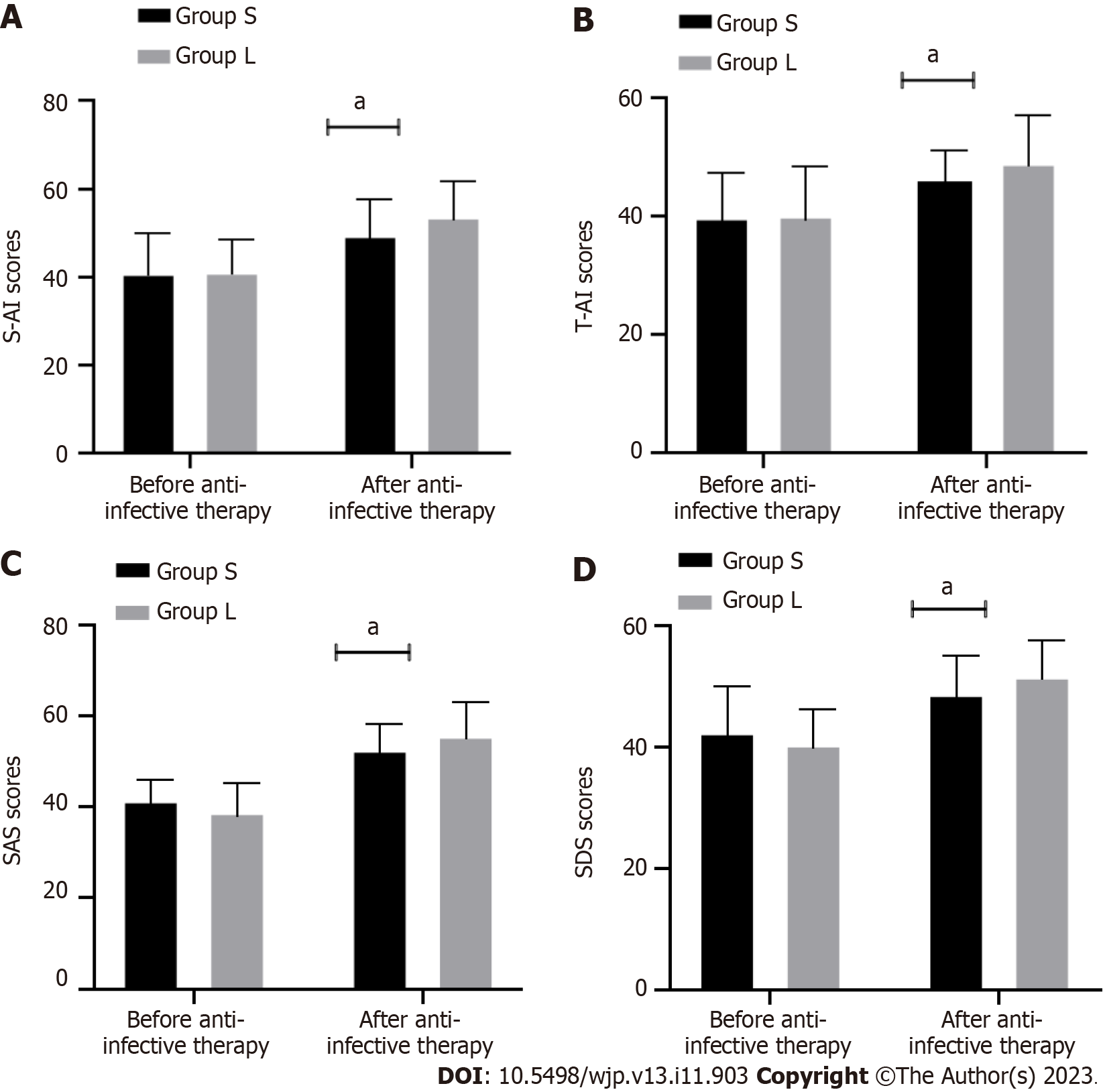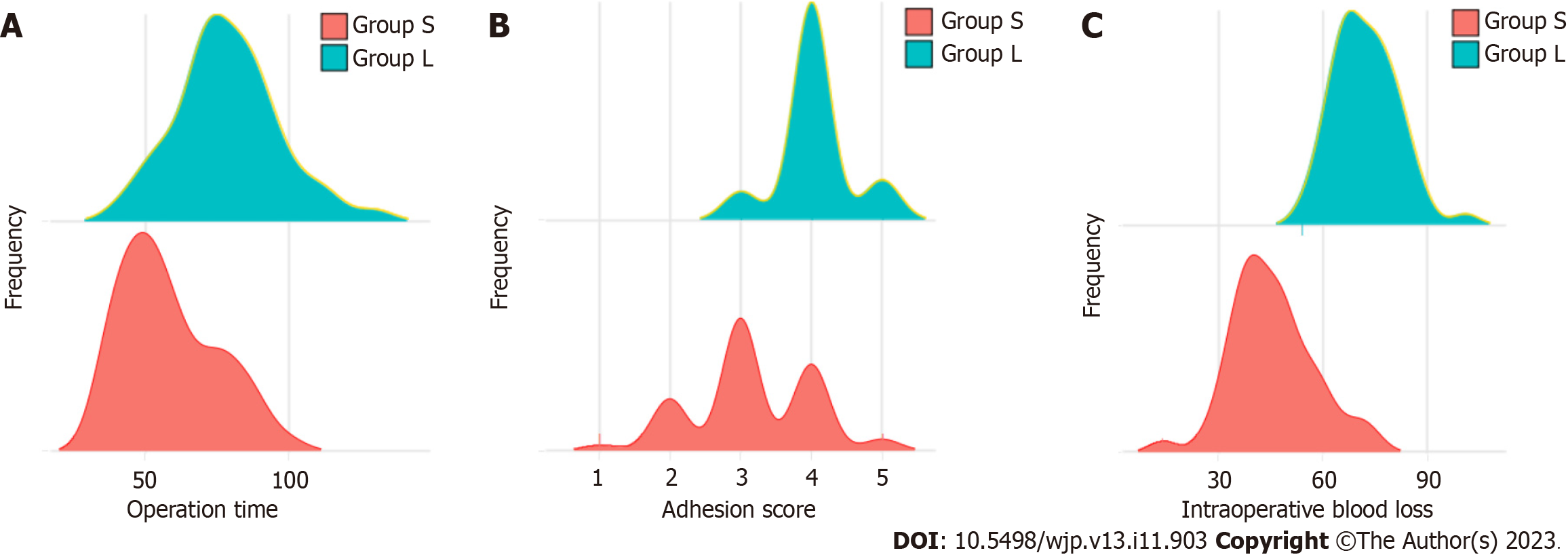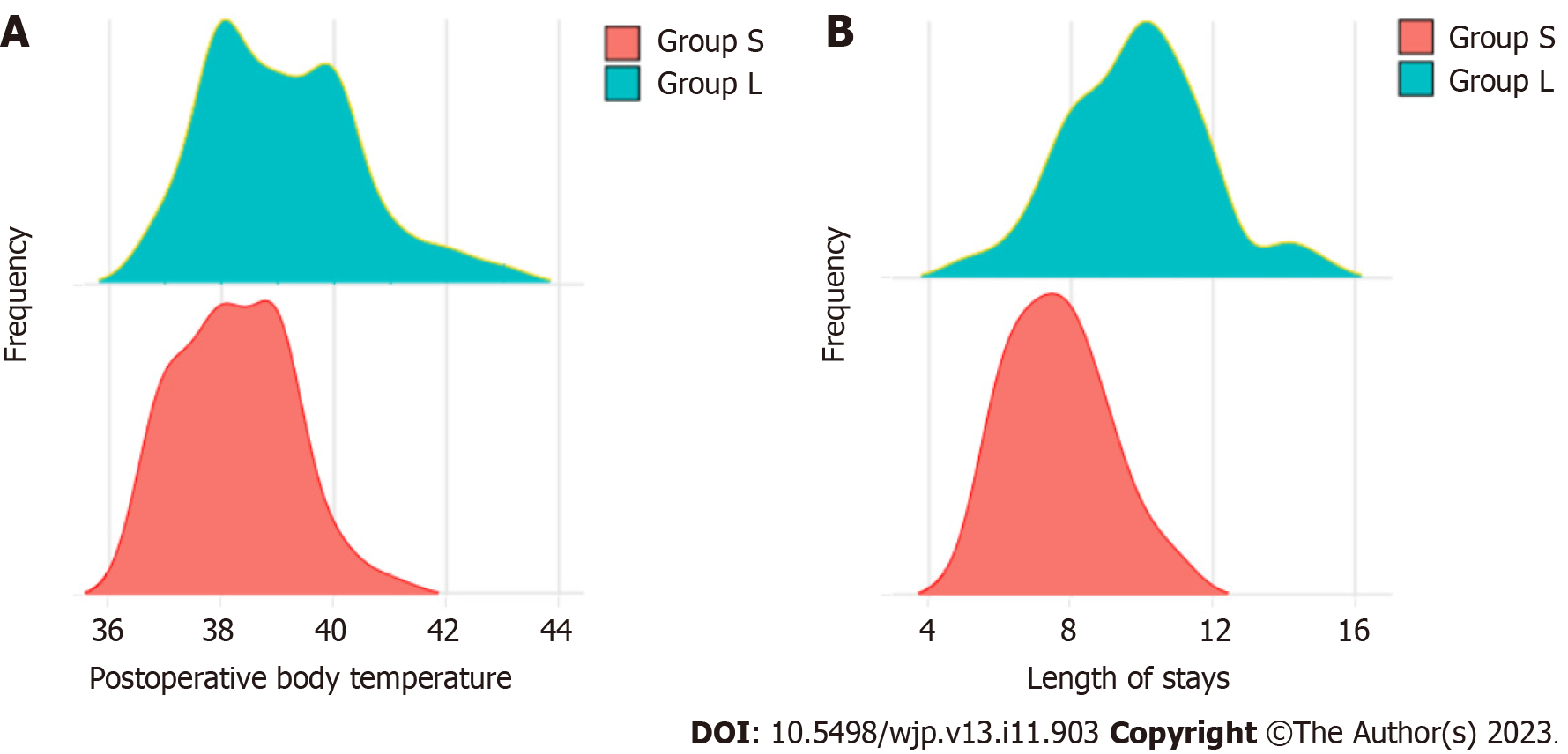Copyright
©The Author(s) 2023.
World J Psychiatry. Nov 19, 2023; 13(11): 903-911
Published online Nov 19, 2023. doi: 10.5498/wjp.v13.i11.903
Published online Nov 19, 2023. doi: 10.5498/wjp.v13.i11.903
Figure 1 The difference in psychological stress.
A: State anxiety score (SAS) before and after anti-infective therapy; B: Trait anxiety scores before and after anti-infective therapy; C: Self-rating anxiety scale scores before and after anti-infective therapy; D: Self-rating depression scale (SDS) scores before and after anti-infective therapy. Data are expressed as the mean ± SD. The state-trait anxiety score and SAS + SDS score of Group S were significantly lower than those of Group L after 24-48 h and 48-96 h of anti-infective therapy. S-AI: state anxiety; T-AI: trait anxiety; SAS: self-rating anxiety scale; SDS: self-rating depression scale. aP < 0.05, there is significant difference between group S and group L after anti-therapy.
Figure 2 Operation time, adhesion score, and intraoperative blood loss of the two groups.
A: Operation time; B: Adhesion score; C: Intraoperative blood loss. The surgery time of Group S was shorter than that of Group L, and the adhesion score and intraoperative blood loss were lower than those of Group L (P < 0.05).
Figure 3 Postoperative body temperature and length of stay of the two groups.
A: Postoperative body temperature; B: Length of stay. Postoperative body temperature was lower in Group S after 24-48 h of anti-infective therapy than in Group L after 48-96 h of anti-infective therapy (P < 0.05), and the hospital stay was shorter in Group S than in Group L (P < 0.05).
- Citation: Zhang RR, Zhang L, Zhao RH. Anti-infective therapy durations predict psychological stress and laparoscopic surgery quality in pelvic abscess patients. World J Psychiatry 2023; 13(11): 903-911
- URL: https://www.wjgnet.com/2220-3206/full/v13/i11/903.htm
- DOI: https://dx.doi.org/10.5498/wjp.v13.i11.903















